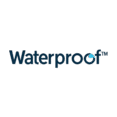WaterprrofTM
The food, beverage, and agriculture sector accounts for 75–80% of global water use, making water not just a shared resource but a strategic imperative.
Tova redefines water-risk management by moving from siloed practices to a unified, ecosystem-level strategy – aligning suppliers, regulators and communities across the food supply chain.
WaterProof™, Tova’s AI-powered water-risk analysis and disclosure platform, delivers a real-time, bespoke, supply chain-wide water management solution by integrating remote sensing, geospatial analysis, and intelligent climate models. It enables site-specific monitoring, analysis and forecasting of water availability, quality, wastewater treatment or watershed dynamics.
With high-resolution, data-rich insights – from catchment-level conditions to water usage in agriculture, plant efficiency, cleaning processes, food packaging, contamination levels or vulnerability to climate events – WaterProof™ empowers food organizations to quantify and evaluate water and infrastructure risks across all operational tiers with precision and speed.
WaterProof™ transparent, centralized and real-time water data disclosure platform enhances fast and agile response to water disruptions like droughts or shortages, by delivering actionable insights, while preserving human oversight, fostering trust and facilitating coordination across producers, suppliers, and communities in the food supply chain.
Our team at Tova is committed to reducing human vulnerability, not just infrastructure exposure. By advancing Scope 3 water-related disclosures – including metrics on waterborne diseases, inadequate sanitation and unsafe labor conditions – WaterProof™ drives socially impactful water initiatives, strengthens community engagement, and ensures food operations safeguard both people and biodiversity.
As Seen In





Benifits of using WaterproofTM
⭐ Precision Hydraulics
💧 Smart Conservation
🔍 Water Quality Forecasting
🚰 Wastewater Management
♻️ Recycling Cooling Water
✅ Regulatory Compliance
📊 Water Risk Assessment
🌍 Climate Resilience
⚡ Agile Coordination
📦 Sustainable Demand
🌊 Virtual Water Tracking
⚙️ Operational Innovation
Why water risk management in the food industry matters
The food, beverage and agriculture (FBA) industry alone accounts for 75% to 80% of water usage worldwide.
Yet, according to the latest survey conducted by the Carbon Disclosure Project, less than half (48%) of FBA companies in the UK carry water risk assessments. Less than one third (29%) report on risks within their supply chain, despite production processes accounting for 75% of water usage. Over half (52%) currently operate in water-stressed areas, of which 25% estimate more than 50% of their facilities might be at risk.
Due to multifaceted challenges – such as cost, operational complexity, legacy systems or disruption risk, the FBA sector lacks the advanced tools to effectively identify and mitigate water-related risks.
With a combined global market value estimated at $22.3 trillion by 2024, poor understanding of water risk exposure could set the industry up for annual losses up to $370 billion, due to operational inefficiencies, food safety breaches, chemical spill offs and untreated wastewater alone.
Due to increasing public health regulations and environmental disclosure requirements, industry players could further incur penalties up to $459 billion, as well as damage to brand reputation, leading to loss of profitability and reduced trust amongst investors and consumers alike.
In addition, global population growth is set to surpass 9 billion by 2050, driving a 53% increase in water extraction by 2030. Extreme weather events and water scarcity are projected to affect 67% of the global population by 2050. Social and climate pressures on freshwater availability will disrupt food supply chains, increase operational costs, with global economic damages from water scarcity and natural disasters totaling $832 billion for food manufacturers in the last two decades alone.
At the current pace, unquantified and unmanaged water risks are projected to drive a 53% shortfall in global water supply by 2050, threatening food operations, increasing costs, and diverting resources from expansion and innovation, while also exacerbating food insecurity, biodiversity loss, and political instability.
But where there are acute risks, there is an opportunity to innovate.
Our WaterProof™ platform leverages deep learning to analyze complex data, build forecasting models, and enhance systems for quality inspection, contamination detection, demand forecasting, and production optimization. It empowers the food, beverage and agriculture industries to uncover and capitalize on high-impact water-related opportunities, boosting competitiveness while driving positive social and environmental outcomes.
